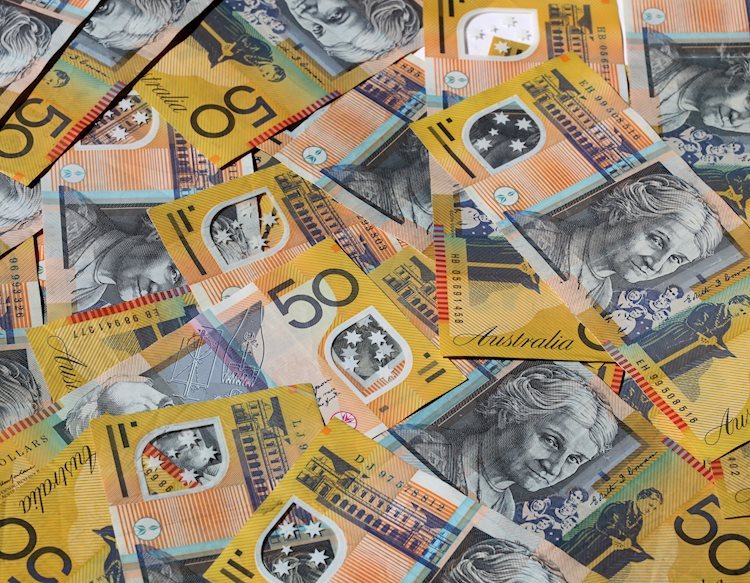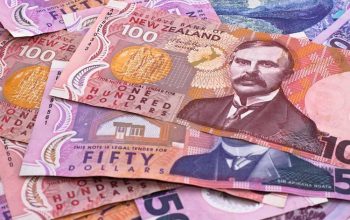- AUD/USD slightly retreats, settling near 0.6575 on Friday.
- RBA reiterates its hawkish stance, contributing to a buoyant AUD.
- Investors digest Chinese inflation reported during the European session.
The AUD/USD pair witnessed a minor setback at 0.6575 during Friday’s session, a modest descent of 0.30{721fc769be108e463fe4e33f629fb22fe291c423a7a69eaaf65dcb28e9b05dea}. That being said, the Reserve Bank of Australia’s (RBA) unwavering hawkish discourse and stronger Chinese inflation figures might limit the downside for the Aussie.
Given the complex Australian economic prospect and the RBA’s hawkish inclination due to elevated inflation, markets persistently price just a 25 bps easing in 2024.
Daily digest market movers: RBA’s resolute hawkish tone and robust Chinese inflation data might favor the AUD
- The Reserve Bank of Australia maintained the rates, echoing that “the board is not dismissing any possibility”. Notably, the Bank highlighted the importance of remaining alert toward conceivable inflation risks, implying no hastened policy reversals.
- On Thursday, RBA Governor Michele Bullock reiterated the reduced requirement for rate cuts, adopting a hawkish tone and asserting that the board “will not hesitate to lift rates if it needs to” to challenge sustained inflation.
- On the data front, emphasizing Friday’s inflation report, the National Bureau of Statistics announced consumer prices in China rose by 0.5{721fc769be108e463fe4e33f629fb22fe291c423a7a69eaaf65dcb28e9b05dea} in July YoY vs. the forecasts of 0.3{721fc769be108e463fe4e33f629fb22fe291c423a7a69eaaf65dcb28e9b05dea}.
- Additional details revealed that the headline CPI soared 0.5{721fc769be108e463fe4e33f629fb22fe291c423a7a69eaaf65dcb28e9b05dea} in July, the highest since February, moderating concerns about a profound economic slump in China.
- In that sense, while good news comes from Australia, the AUD’s downside is limited.
AUD/USD technical outlook: Pair faces strong resistance at the SMA convergence around 0.6000
AUD/USD’s price action over the previous week reflects that the bulls are encountering substantial resistance around the 0.6600 level, which coincides with the convergence of the 20,100 and 200-day Simple Moving Averages (SMA). However, support has been persistently holding strong at 0.6500.
The Relative Strength Index (RSI) has been stagnant around the neutral zone, oscillating values near 49, indicating neither a significant buying or selling pressure. The large spike from nearly 30 to 49 this week suggests that the buyers made a stride toward mounting traction.
Inflation FAQs
Inflation measures the rise in the price of a representative basket of goods and services. Headline inflation is usually expressed as a percentage change on a month-on-month (MoM) and year-on-year (YoY) basis. Core inflation excludes more volatile elements such as food and fuel which can fluctuate because of geopolitical and seasonal factors. Core inflation is the figure economists focus on and is the level targeted by central banks, which are mandated to keep inflation at a manageable level, usually around 2{721fc769be108e463fe4e33f629fb22fe291c423a7a69eaaf65dcb28e9b05dea}.
The Consumer Price Index (CPI) measures the change in prices of a basket of goods and services over a period of time. It is usually expressed as a percentage change on a month-on-month (MoM) and year-on-year (YoY) basis. Core CPI is the figure targeted by central banks as it excludes volatile food and fuel inputs. When Core CPI rises above 2{721fc769be108e463fe4e33f629fb22fe291c423a7a69eaaf65dcb28e9b05dea} it usually results in higher interest rates and vice versa when it falls below 2{721fc769be108e463fe4e33f629fb22fe291c423a7a69eaaf65dcb28e9b05dea}. Since higher interest rates are positive for a currency, higher inflation usually results in a stronger currency. The opposite is true when inflation falls.
Although it may seem counter-intuitive, high inflation in a country pushes up the value of its currency and vice versa for lower inflation. This is because the central bank will normally raise interest rates to combat the higher inflation, which attract more global capital inflows from investors looking for a lucrative place to park their money.
Formerly, Gold was the asset investors turned to in times of high inflation because it preserved its value, and whilst investors will often still buy Gold for its safe-haven properties in times of extreme market turmoil, this is not the case most of the time. This is because when inflation is high, central banks will put up interest rates to combat it. Higher interest rates are negative for Gold because they increase the opportunity-cost of holding Gold vis-a-vis an interest-bearing asset or placing the money in a cash deposit account. On the flipside, lower inflation tends to be positive for Gold as it brings interest rates down, making the bright metal a more viable investment alternative.



